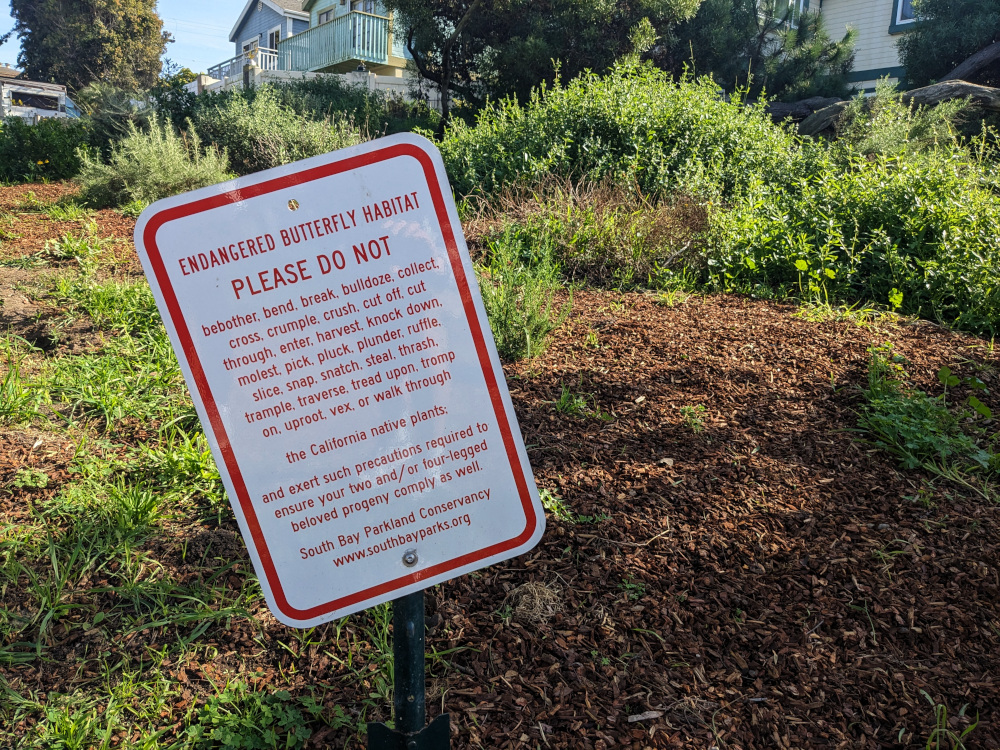
Along the Hermosa Beach greenbelt. The South Bay Parkland Conservancy has been restoring parts of the habitat near the south end of the trail to support monarchs and other endangered butterflies.

Along the Hermosa Beach greenbelt. The South Bay Parkland Conservancy has been restoring parts of the habitat near the south end of the trail to support monarchs and other endangered butterflies.
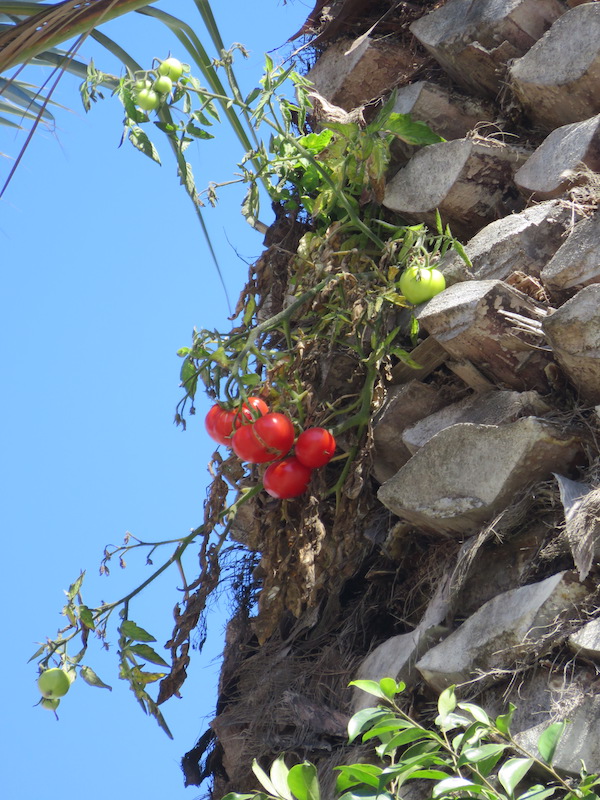
Is this the weirdest place I’ve seen a volunteer tomato? It’s certainly up there!
*sorry*
*ok, not sorry* 🙂
Originally posted on Pixelfed. Observation on iNaturalist.
Update: There’s also a black nightshade of some sort and a ficus growing out of the same tree, which you can sort of see in the medium-zoom photo.
Update Sep 13: Found a notice pinned to all the trees along this edge of the block: The construction project for the LAX people-mover wants to take them all out.
They do intend to replace them, but I guess the treetop tomato is not long for this world. 😢
We’ve joked about “feral tomatoes” for ages, and occasionally found a volunteer tomato plant in an unexpected place: a city park, or next to an office parking lot.
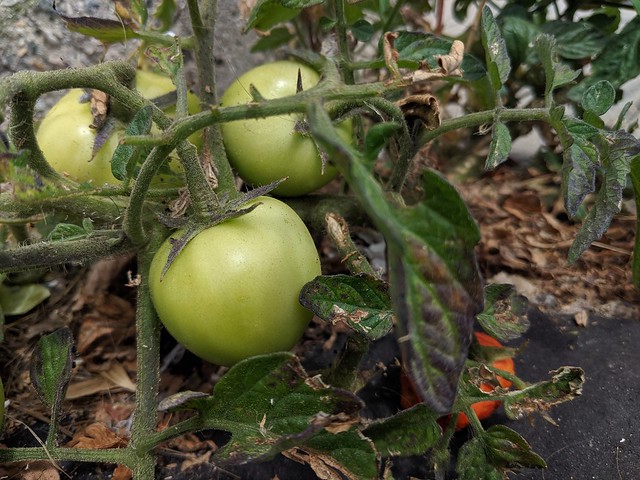
This feral tomato plant was growing out of a crack in the pavement next to the driveway of a grocery store. I imagine someone must have dropped a tomato with viable seeds on the way out and it took hold.
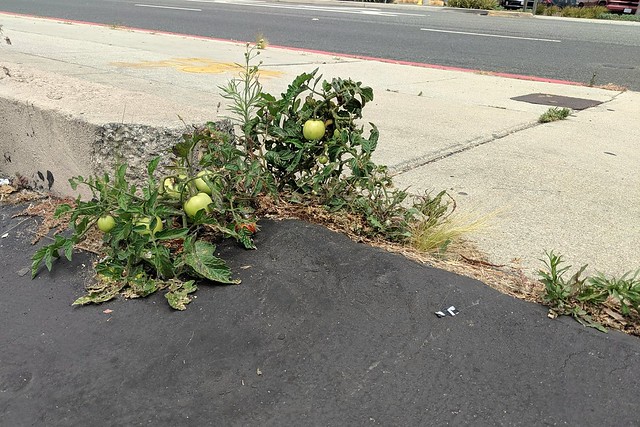
It’s doing remarkably well, especially under the circumstances of where it is. Heck, it’s doing better than most tomatoes I’ve planted on purpose!
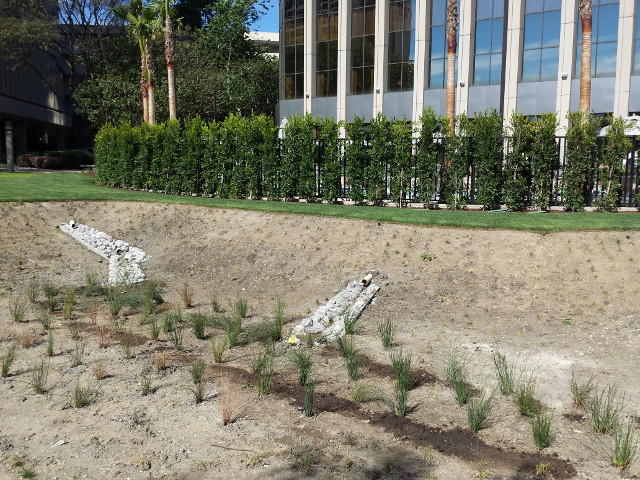
I’m still not sure how this new landscaping is supposed to work. My best guess is that the lower area is supposed to collect runoff and seepage from the surrounding lawn and other plants (and the street gutter behind me, interestingly enough) in order to reduce water usage and actually do something with water that would otherwise be sent into storm drains — a good idea in drought-stricken California.
There does seem to be a drain so that it won’t totally fill up in the rain, like it did a few months ago before they had all the plants in: Continue reading
You’ve probably seen the story about how a group of teenagers showed that plants won’t grow next to a WiFi router. We did our own experiment, but first some things to consider about the story making the rounds:
After we read up on this, Katie decided to do a simple experiment herself. She put seeds next to our router, on top of our refrigerator, next to the TV, and for a control, outside. She found that the seeds placed next to our router did just fine — considerably better than those left outside, and slightly better than those placed elsewhere around the house.
Each bag contained one kidney bean, one black-eyed pea, and one seed from the red bell pepper I cut up for dinner. I put a section of select-a-size paper towel, folded twice, in each and set the seeds inside the second fold. Each bag got 15 mL of Brita filtered water and the air was squeezed out before sealing. Then I left them around the apartment for several days to see if they’d sprout. This is a picture of what resulted.
I wonder if the seeds in the school experiment just dried out. Katie sealed her seeds in plastic bags, which allowed radiation to pass through, but trapped moisture. As I understand it, the students watered their seeds throughout the experiment, but it’s possible the trays dried out overnight. Comparing moisture content/retention would be an interesting follow-up.
Obviously, this isn’t any more rigorous than the original experiment. But it shows that the results they found are the beginning of the process, not the last word. More importantly, it’s something you can easily test yourself if you’re so inclined. Next time you see a startling claim that’s something you can test without too much trouble, try checking it out for yourself.
Incidentally: We planted the seeds in our patio yesterday. With any luck, they’ll do as well as our tomatoes (and better than our poor carrots) this year!